Moira Butterfield's Blog, page 8
January 22, 2023
A creative writing exercise – The childhood book in your brain by Moira Butterfield
I am a member of the Scattered Authors Society – a very friendly, relaxed, supportive and creative UK group run by and for children’s and YA writers. We get together online and occasionally in person – with two weekend retreats a year. These comprise creative workshops of all kinds run by the attendees themselves - and some content from one of the recent workshops is here in this blog. If you live in the UK and you are a traditionally-published children’s author do consider joining. It’s a small one-off payment (about the value of 4 or 5 coffees) and well worth it. You can find out more through the link at the end of this blog.
I recently took part in a weekend retreat run by the Scattered Author's Society and I offered some of this content as a workshop for my fellow attendees. I thought you might like to try some of the writing exercises for yourself. It’s based around books that you loved as a child. These influences can be very powerful for writers, and by accessing them we might find some creative wells, or at least food for thought. Try it for yourself in a notebook one day!
I thought about doing this when my Mum recently asked me and my sister to sort out our childhood books and take them away from her house (which I suppose is fair enough!). We didn’t have that many books compared to kids today but that was because we were regularly moving. We used the library mostly but the relatively few books that we owned were read again and again and again. And my theory is that these early books lodge in the brain forever – and they might possibly affect our creative life forever – like a sort of flavouring that’s been added to us.
Obviously illustrations are likely to play a very strong part in our memories, too. They might be very integral to a book but for now we’re going to concentrate on the writing – because if we are writers it’s more likely that the influences we uncover will be writerly ones, perhaps.
A) Start by doing a warm-up 3 minutes writing about your memories of you reading a book, as a child. Where are you. What are the sounds, the smells? Are you on your own or are there people with you?
B) Next I want you to think about the plot of the book you’ve chosen and why it appealed to you in particular. (For example, I loved a quest story. Thinking about it, I moved with my family every year or two and I had to regularly find ways to fit into a new place - so perhaps that fed into my love of journey/quest books).
So let’s focus on the plot of the book you’ve chosen. I want you to answer a few questions – just quickly.
1. Is your favourite book set in the real world or is it in imaginary realm, or both?
2. In the plot of your favourite book, who is the main character.
3. In your plot did your character have a family present throughout the book, or not.
4. Does magic play a part or is it human agency.
5. Write down a location you strongly associate with your book. It might not have a name. It could be ‘treehouse’ or ‘seaside town’ or ‘garden’.
6. Write down a certain sound that your book brings to mind.
7. Write down a certain smell that your book brings to mind.
8. In about 5 sentences or so why do you think that this book appealed to you so much as a child? Nobody else – not why it was popular or whatever – why it chimed with you.
C) Ok, let’s move on to overarching themes of society. I’m from a generation born in the 60s – and looking back I can see how wartime was very much a theme of the books we were encouraged to read by adults –and by that I mean good v. evil, monsters at the gates, societal chaos (revolution, perhaps) as a bad thing. There are the out-of-control weasels upsetting the order of things in Wind in the Willows and also the really intense overarching evil of the Hobbit and the moral dangers of the Narnia books. These were all set in fantasy realms – so although they had obvious allegory (to us now) it was filtered – perhaps to make it less awful and scary, perhaps because people didn’t want to talk directly to kids about what had happened – I find that societal connection very interesting.
Do a little bit of thinking about the overarching themes in your chosen book and whether you think it was of its time. For a minute or two, write down your thoughts about that.
D) I want to focus in on the hero or the heroine – or if there is a group of characters choose your favourite. Do a couple of questions to help you focus.
1. Is the character human or something else – an animal or a magical being for example.
2. Who is your character’s best friend in the book, or perhaps they don’t have one.
Now spend 5 minutes writing about why you loved this character.
E) And now think about a scene in one of your childhood book that you remember to this day – the one that made you happiest. Write down why it made you happy. Or if it’s not one scene then what scenes in general made you happiest?
And was there a scary scene that was full of peril – that has stuck with you from your childhood books? Or if it’s not one scene then what scenes in general made you scared? What aspects scared you?
Spend, say, 5-7 minutes writing down what made you happy or scared in these favourite books.
Do you think you’ve used any of these influences in your own writing?
Ok. You’re at the end of your peek into your bookish psyche! Perhaps some of the notes you’ve made will get you thinking more about where your influences come from – many and varied as they are – and, who knows, they might trigger something that inspires you. And let us know about your childhood faves in the comments below.
To find out more about the Sassies go to https://scatteredauthors.org.
Moira Butterfield writes early years non-fiction and poetry and mixes the two and adds in stories and generally tries to push the boundaries of what a kid’s fact book is! Look out for her many books around the world.
Moira Butterfield
twitter @moiraworld
instagram @moirabutterfieldauthor
January 15, 2023
23 PICTURE BOOKS TO LOOK FORWARD TO IN 2023!
As has become tradition, I'm here to mark the New Year by sharing some upcoming picture books titles. So hold onto your library cards and 'to be read' piles... here are 23 picture books publishing in 2023 that caught my eye.
You can see which texts I shared for 2022 here.
1. DARWIN'S SUPER-POOPING WORM SPECTACULAR by Polly Owen and Gwen Millward (January 3rd)
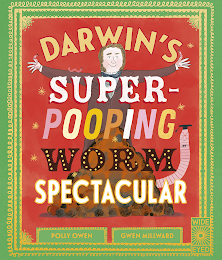
Learn the funny and fascinating story of Charles Darwin and the ground-breaking discoveries his love of the humble worms led to in this hilarious illustrated book.
Charles Darwin is widely known for his "Origin of Species" book, yet Darwin had another great love, and that was for worms.
Told for the first time for children, this is the silly and fascinating true story of how Charles Darwin came to discover that the humble earthworm is the most important species on our planet.
Told in a humorous and engaging way with non-fiction information on each page to help educate alongside the story, curious minds will love this fact-filled, laugh-out-loud title.
2. SUPERHEROES ALWAYS FIGHT BACK.... (OR DO THEY?) by Kate Thompson and Clare Elsom (January 4th)
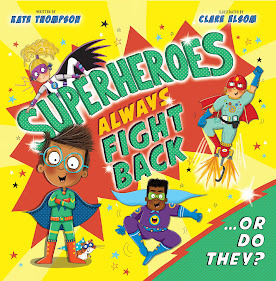
Arthur dreams of being a mega-fast and strong superhero with the ability to fight and banish the baddie next door. But when Grandpa explains that the best superheroes actually save the day by being kind, Arthur realises that we all have a superpower inside and that an act of kindness, no matter how small, really can change the world.
Using lively rhyming text and a fun cast of characters, Superheroes Always Fight Back ...Or Do They? highlights how kindness truly is the most amazing superpower of all.
3. I REALLY REALLY LOVE YOU SO by Karl Newson and Duncan Beedie (5th January)
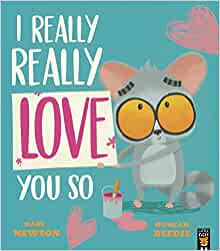
The hilarious sequel to the bestselling I Really, Really Need a Wee, by dynamic duo Karl Newson and Duncan Beedie, will not disappoint fans of this cute and curious Bush Baby.
Bush Baby is BACK . . . and has something really, really IMPORTANT to say . . . but how?!
From climbing a mountain, to wrestling with crocodiles, this story is packed with extreme and exciting ways to show a special someone that you love them. But sometimes the simplest way to show that you care is the best way . . .
This fantastically funny story explores all the ways to say “I Love You”. Fans of Guess How Much I Love You by Sam McBratney and Anita Jeram, The Boy Who Loved Everyone by Jane Porter and Maisie Paradise Shearring and I”ll Love You Always by Mark Sperring and Alison Brown will LOVE, LOVE, LOVE this fabulous story.
4. SO YOU WANT TO BE A FROG by Jane Porter and Neil Clark (2nd February)

A funny and informative picture book all about fabulous frogs! Have you ever wanted to leap twenty times your own body length?
Can you drink through your skin? How about catching all your food with just your tongue?
Come and join frog club to learn all about amazing amphibians in this funny, fact-filled picture book.
Let Fabio Frog put you through your paces. He'll teach you how to croak, wriggle, leap and catch flies!
Have you got what it takes? With gorgeous, humorous illustrations by Neil Clark.
5. THE BLUE UMBRELLA, by Emily Davison and Momoko Abe (2nd February)
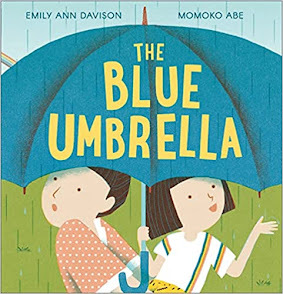
The most magical things can happen even on the rainiest of days...
How many people can you fit under one umbrella?
It wasn’t even meant to rain the day the blue umbrella turned up, but for the people who used it that day, they found something more than just shelter: something truly amazing had happened. A community had come together, bound by kindness and friendship.
6. THE MEMORY BOOK by Louise Gooding and Erika Meza (2nd February)
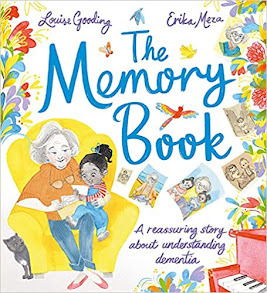
"A helpful book for families affected by dementia" - CARERS UK
I love visiting my grandma. We read together, play her piano, feed the birds in the garden and we love looking through her big box of photos . . .
But when Grandma starts to forget who the people in the photographs are, Mum explains that Grandma is living with something called dementia. She says, "Grandma is still the person we know and love, she's just a little different now . . . "
A reassuring story about the love between a little girl and her grandma, with practical information to help young children understand dementia and the changes it can bring.
7. OUT OF THE BLUE by Robert Tregoning and Stef Murphy (2nd February)
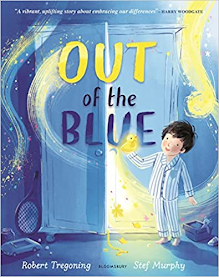
ONLY BLUE ALLOWED, by Blue government demand.
Anything that isn't blue, by colour law, is banned.
In a very blue house on a very blue street, sits a little boy who feels as blue as the world around him. For this little boy has a BIG secret: he loves the colour yellow.
In a world where only one colour is allowed, will he be brave enough to tell his dad? And will they be able to defy the rules and create a world where EVERY colour is welcome?
One boy and his dad are about to come OUT OF THE BLUE and into life in technicolour!
8. HOW TO MAKE A STORY by Naomi Jones and Ana Gomez (2nd February)
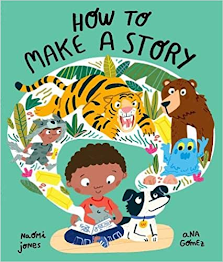 When Milo decides he's going to tell a story, it seems like a great idea. A story of his very own, made up by him! The only problem is that he's not sure how to start ... or what to put in the middle ... or how to end it.
When Milo decides he's going to tell a story, it seems like a great idea. A story of his very own, made up by him! The only problem is that he's not sure how to start ... or what to put in the middle ... or how to end it.With a little help from his family and a lot of real-life inspiration, Milo's story is soon off to a flying start. If only his little brother and sister weren't getting in the way. But then Milo learns the most important lesson of all about stories - that they are made to be shared.
9. PLANES, PLANES, PLANES Donna David and Nina Pirhonen (16th February)
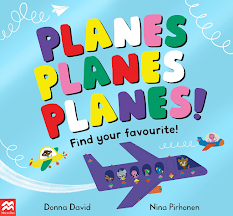
Long planes, short planes, stuck at the airport planes . . . which do you like best? Follow fifty colourful planes as they race through the air – soaring, swooping and loop-the-looping! Can you find your favourite?
Full of spotting and counting fun, with different planes to follow on each page and an exciting fold-out race at the end, this rhyming preschool picture book from Donna David and Nina Pirhonen has been specially developed to encourage pre-reading skills and expand language and vocabulary. With a super-shiny foil cover and fun read-aloud text, Planes Planes Planes! is perfect for any transport-obsessed toddler!
Part of a preschool series from Macmillan Children's Books, Planes Planes Planes! includes reading tips for parents and carers at the back of the book. Fans of this book will love the others in the series: Trains Trains Trains! and Cars Cars Cars!
10. THE EMERALD FOREST by Catherine Ward and Karin Littlewood
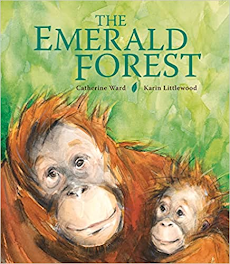
One day Orangutan heard a faint noise.
Hardly a noise at all – just a distant droning. Then there was a crash!
Smoke seeped through the canopy…
Orangutan and her family live in a vast emerald forest, bursting with life. She teaches her babies what food to eat, how to swing through trees, how to build a sleeping nest. Life is good… until one day a monstrous machine tears Orangutan’s tree from the ground. The family have to leave the emerald forest – but where can they go to?
This powerful and moving picture book is set in tropical Sumatra, an island that has lost almost half its rainforest cover in recent years. The story graphically describes the reactions of an orangutan family to the destruction of their age-old home, but also shows how wildlife campaigners are bringing hope for the future.

WHOOOOSH! We're off on an exciting adventure in our hot-air balloon to say hello to all the different kinds of weather that make up our world.
Join in with the rhymes and get ready to meet everything from whooshing wind to bright rainbows and shimmering sunshine. Little ones will be swept away on an unforgettable journey in this striking, action-packed picture book.
This bold, bright follow-up to the acclaimed picture books Meet the Planets and Meet the Oceans is packed with gorgeous illustrations of everything from rainy rainforests to snowy mountains and stormy seas. Combining STEM learning with a rhyming twist, it's perfect for all little meteorologists!
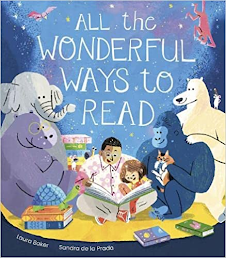
A delightful story by Laura Baker, illustrated with warmth and humour by Sandra de la Prada, that celebrates reading in all its forms.
Books take us on journeys that we can all share,
And give us the power to go anywhere!
So no matter just how, or what book,
or your speed, what I wish for NOW . . .
Is that YOU love to read!
This fantastic book inspires ALL children to find their own wonderful way of reading. Little bookworms who love A Child of Books by Oliver Jeffers and Sam Winston, Wolves by Emily Gravett and Books Always Everywhere by Jane Blatt and Sarah Massini will adore All the Wonderful Ways to Read.
13. FARUQ AND THE WIRI WIRI by Sophia Payne and Sandhya Prabhat (16th March)
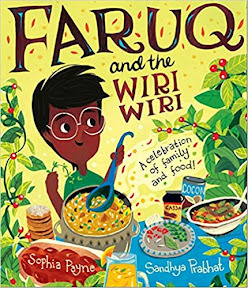
There is not a better smell in the world than Ajee's Cook-up rice. The kitchen fills with the smell of coconut, garlic and spices. Faruq loves his grandmother Ajee, and he loves her cooking. In fact, Faruq would like to cook too - he wants to be a chef, but Ajee says he has to be a doctor like his father.
But one day when Ajee is too ill to make the family feast, with the help of his neighbour Mrs Joseph, Faruq picks some hot wiri wiri chilli peppers and cooks up a banquet. Preparing food for his family fills Faruq's heart with love - and sets a different course for his future.
This sumptuous story celebrates Caribbean culture and food through Sophia Payne's distinct voice that is reflective of her Indo-Guyanese heritage and is brought to life by Sandhya Prabhat's beautiful artwork. It also includes a recipe for Guyanese Lime cookies for you to try at home!
14. MONSTERS IN TRUCKS by Laura Baker and Nina Dzyvulsk (4th April)
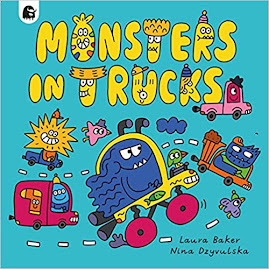
Tall monsters, small monsters, monsters here and there.
Hairy monsters, scary monsters... in TRUCKS everywhere.
Children will love this super-fun title packed with hilarious monsters in incredible trucks! Follow the monsters as they build a city and watch out for a monster thief on the loose!
There is plenty to spot on every page, with playful, bright artwork and lots of amusing mishaps.
Energetic, whacky and characterful monsters are drawn in a vibrant, contemporary style by Ukranian illustrator Nina Dzyvulsk - spot Grin monster in a forklift truck, Brainy monster busy building, and Jiggly monster who might need the loo!
The simple narrative with fun wordplay and a gentle rhyme is perfect for reading aloud, ideal for preschoolers and early readers as they build up their vocabulary and reading confidence.
This bold, bright and playful book is sure to be enjoyed time and time again by young readers as they are thrilled by the wild escapades of the monsters in trucks!
This is the first in a series, with the second book to follow later in the year.
15. LOVE, THE EARTH by Frances Stickley and Tim Hopgood (6th April)

A poetic, spell-binding message from the Earth directed straight to the reader inviting us all to appreciate the natural wonders around us and to take steps to protect them.
The Earth itself takes the reader on a glorious tour of the wonders of nature, both little and large. Love, the Earth is an enchanting story that gives readers the perfect chance to see all the facets of the Earth, its mysteries, its generosity and its unparalleled beauty. It is also a powerful call to arms to look after the Earth in turn.
Combining charming, rhyming text and spectacular artwork, this book is a magnificent celebration of the Earth.
16. GRANDPA AND KINGFISHER by Anna Wilson and Sarah Massini (6th April)

Life-affirming and lyrical, this beautiful picture book celebrates the awesome power of nature, while gently introducing young children to the concept of life and death.
Over the course of a year, a young child and their dog watch kingfishers by the river with Grandpa. As spring turns to summer and autumn to winter, the kingfishers raise a family, while Grandpa teaches his grandchild about the power of nature and the circle of life.
Written in memory of her father, whose favourite bird was the kingfisher, Anna Wilson takes readers on a lyrical journey though a year in the life of a kingfisher family. Stunning illustrations by Sarah Massini bring the riverbank to life in all its glory, while the powerful intergenerational bond between grandparent and grandchild shows that just as spring always follows winter, hope will always return if you know where to look for it.
A positive story about life, death, and being a part of the natural world.
17. ALL THE THINGS YOU WILL DO by Lucy Rowland and Neely Daggett (13th April)
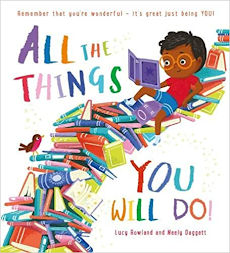 A joyfully uplifting picture book that celebrates YOU - and all the wonderful things that you'll bring to the world.
A joyfully uplifting picture book that celebrates YOU - and all the wonderful things that you'll bring to the world.Sometimes in the mornings when I'm looking down at you,
I stop and watch and ponder all the things that you will do.
This beautifully written and gorgeously illustrated picture book is full of all the hope and joy that comes with new beginnings.
With an inspiring and encouraging message to help children through life's ups and downs, it's the perfect gift for all children.
18. HOW TO GROW A DRAGON by Rachel Morrisroe and Steven Lenton (20th April)

Join Sarah and Mr Pottifer in their magical plant shop, where fantastical creatures grow from trees!
A story that celebrates problem solving, kindness and resourcefulness.
An unexpected delivery of dragodil seeds provides the perfect chance for Sarah and Mr Pottifer to grow helpful dragon pets for their customers - or does it? It turns out that these fiery dragons are not very well-behaved at all... and everything soon spirals into smoke-filled, out-of-control DRAGON CHAOS!
Can Sarah's quick thinking and green fingers save the day?
The second magical adventure from the author and illustrator of the bestselling How to Grow a Unicorn.
19. YOU'RE SO AMAZING! by James and Lucy Catchpole and Karen George (4th May)
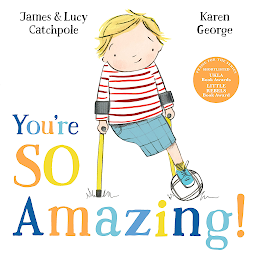
When people meet Joe, they often treat him as Amazing Joe or Poor Joe.
But can't he just be . . . Joe?
One-legged Joe is 'amazing'. He knows this because wherever he goes people always tell him he's amazing. Amazing for sliding down the slide, for kicking a ball . . . even walking to get an ice cream, or even just eating an ice cream. Of course, being Amazing Joe is better than being Poor Joe . . .
A ground-breaking picture book which explores how we respond to disability.
20. SUNNY SIDE UP! by Clare Helen Welsh and Ana Sanfelippo (11th May)
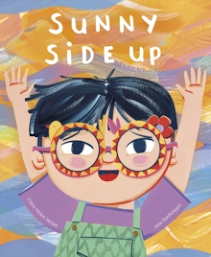
A CBT-inspired novelty book by Clare Helen Welsh, accompanied by beautiful, nuanced illustrations from Ana Sanfelippo. When you change the way you look at the world, the world you look at changes. When you put on your sunny-side specs a bad mood can become a good mood, a goodbye can become a hello, and even the impossible can become possible! But sometimes, no matter how hard you try, the sunny side seems far away.
And that’s OK. Sunny things will be there to discover whenever you are ready. This warm and innovative novelty book uses die-cuts and flaps to transform the world around us, illustrating the power and impact that reframing your thoughts can have.
21. A SWIFT RETURN by Fiona Barker and Howard Gray (June)
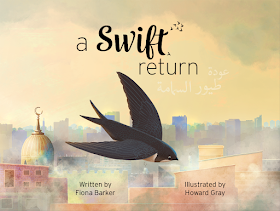
A Swift Return is a follow up from the team behind 'Setsuko and the Song of the Sea.' This time the focus is on the air rather than the water. A swift falters on her long migration. Can two children clean the air in their city so the swift can continue her journey and return safely next year?
22. SAMMY STRIKER AND THE FOOTBALL CUP by Catherine Emmett and Joe Berger (8th June)
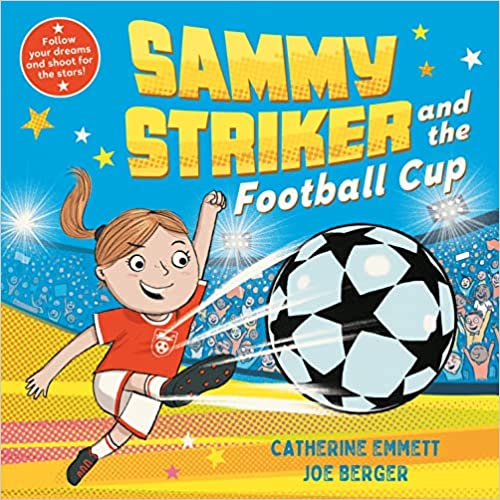
An empowering story about friendship, football, and having the courage to believe in yourself.
Sammy Striker is NEVER found without a football at her feet, and one day at the park, she's spotted by Melissa McDream who coaches the Under 8s National Team! Sammy is a dribbler-extraordinaire, headed straight for the top. But, as the Fotball Cup gets closer, Sammy's shots on goal go a bit . . . wonky.
Will Sammy work out that it's what makes her DIFFERENT that will help them win the final?
23. CAN YOU SEE THE STARS? by Anna Terreros-Martin (3rd August)
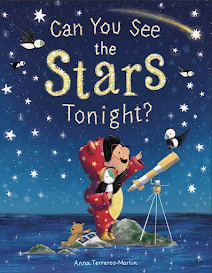
Nora and her Puffin love looking at the night sky. But tonight, the moon and stars aren’t very bright, and they’re determined to discover why!
After rescuing a lost baby puffling and going on an adventure to Puffin Island, they finally understand… but they’ll need a bit of imagination to make the star’s sparkle again!
A beautiful adventure that will make you want to look up at the sky tonight!
There's no doubt that I have missed some FANTASTIC books, so please do add your recommendations in the comments below!
January 9, 2023
How NOT to Write a Rhyming Picture Book by Juliet Clare Bell
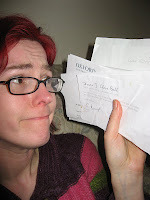
Having received countless rejections (above) for unpublishable rhyming picture books before finally writing a publishable one, I thought I might share my top tips on how *not* to do it...
[1] Decide to have a go because you’ve seen lots of badly rhyming books out there and you’re sure you can do better.
It’s true. There are less than brilliantly-rhyming books out there…
BUT they are often written in-house by staff at the publisher’s, in order that a series can be made quickly, with an illustrator they already have in mind, and without having to pay an author. (Check out the copyright details in the book. Does it say Text © X-Publishers rather than Text © Author’s name?) I once received a rejection from a publisher saying “We like your rhyming story, but it’s the kind of thing we can do in-house”. You are not competing with these stories (or with stories published twenty years ago and no longer in print. Check when your 'competition' was written: publishing practice has changed). Give the publisher a rhyming story that no one else can write better than you. Yours needs to be as worthy of being published as one by Julia Donaldson or Jonathan Emmett (see his Someone Bigger, below).
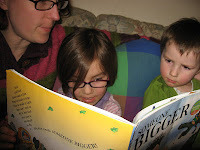
[2] Let the rhyme dictate the story.
It’s great to play around with a story and get carried off in unexpected directions (and you can have a lot of fun with a good rhyming dictionary –I love the Chambers Rhyming Dictionary, with a foreword by Benjamin Zephaniah). BUT if your story is taken hostage by the rhyme (your sweet little rabbit heroine turns into a nun because 'habit' is the only rhyme you can come up with), it probably won’t be a very satisfying story –even if your rhyming is great. If you write your story out in prose, you will soon see if it’s substantial enough as a story or whether the rhyme is carrying it. The plot and characters need to be as strong as for one written in prose. Clever rhymes can be fun to read once or twice but the book won’t stand up to endless repetition if there’s no substance to the story.
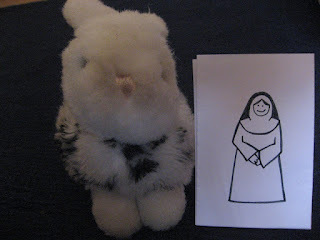
Would you want this poor rabbit changed into a nun because of the constraints of the rhyming picture book? (And you can see why I'm a writer and not an illustrator.)
[3] Use sentence structure like old nursery rhymes, or lyrics from a song. It was good enough for Old King Cole…
What’s wrong with Old King Cole calling for his fiddlers three (because a merry old soul was he)? Or with having five little snowmen fat (because each had a funny hat)? It’s easier to find a rhyme for three than fiddlers, and having fat at the end of the line scans better than ending with snowmen. So why not rearrange sentence structure wherever it suits you in order to make the rhyme work? Because… it’s lazy rhyming, it’s not how people speak and publishers don’t like it. If you have to make your sentence structure sound forced and unlike real-life speech, it’s not working. Old King Cole is great (and you can forgive a lot for a good tune), but it is of its time and it wouldn’t get a second glance from a 21st Century editor.
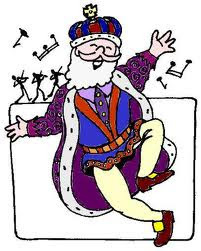
These days, with his fiddlers three, Old King Cole would be published not.
[4] Don’t worry about meter and length of lines. Your readers will learn how to read it after they’ve tried it out five or six times. And then they’ll be able to enjoy it for years to come.
…Except they won’t. No one’s going to work hard at reading your picture book, not a potential reader in a shop and certainly not an editor. Picture books are created to be read aloud. They have to sound right, and it’s especially true of a rhyming picture book. So read it aloud –LOUDLY, with feeling. Even if it is embarrassing. (I’ve even cut out a manuscript of mine and blue-tacked the lines of text onto someone else’s picture book where I thought they should go and then recorded myself reading it, to hear what it really sounded like with the breaks for page turns.)
But even when you’ve read it aloud and feel happy with the rhythm and rhyme, you know how it should sound. Which also means you can read some words more quickly than others in order to fit everything into that line and scan it perfectly. So let other people (preferably not family and friends who are either going to love it –good or bad- because it’s written by you, or not love it and upset you –I’ve had both). (For hints on joining or setting up a critique group, click here.) If other people read it and bits of it don’t scan for them, you need to work on the scansion-even if you can make it scan perfectly.

Scene from an SCBWI open critique meeting in Birmingham, UK
[5] Write a poem and call it a picture book. No need to think about the picture element and page turns.
You’ve written a great poem. You want to get it published and you could submit it to a poetry anthology or you could send it to a picture book editor. Much better to get a whole book out of one poem, right…? Except that picture books are about the interplay of words and pictures. Readers will slow down to look at the pictures –you need to take this into account. It can work –with a brilliant poem, a fantastic illustrator and a great publishing team (see Jim by Hilaire Belloc and Mini Grey, below). But it will need all the elements of a great picture book (with exciting page turns and changes in pace, etc.).
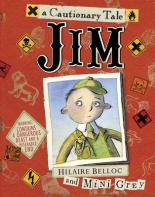
[6] Don’t read other rhyming stories before you start to write because they might curb your creativity and you might be too influenced by them.
Much better to write straight off without reading what’s already out there. You’ll end up with something much more original… Except that you will learn a lot by reading a lot –the good and the bad (and think about why the bad is bad). I actually type out stories that I really like so I can look even more closely at the structure, words/syllables per line, internal rhyme, etc. Ones I’d definitely recommend are: Room on the Broom (Julia Donaldson and Axel Scheffler), Someone Bigger (Jonathan Emmett and Adrian Reynolds) and my personal favourite, When a Zeeder Met a Xyder (Malachy Doyle and Joel Stewart, below. When a Zeeder Met a Xyder actually uses rhyme more playfully –but you can use it more playfully once you really know how to use it).

[7] Write in rhyme just for the sake of it.
It’s fun to rhyme and children love it, so why not write your story in rhyme? Well, it’s true, children do love it, when it’s done really well. But… you have to realise that you’re significantly limiting your choice of publisher by doing it. If you write out your rhyming story in prose, does it actually work better? Very often, removing the rhyming constraints opens up exciting possibilities and improves the story. If it’s not the very best way to tell that particular story, perhaps you should opt for prose? Never write in rhyme just for the sake of it. If you’re going to write in rhyme, do it because…
you can do it really well and you’re going to get feedback before you send it off; because it’s great and fun and good rhyming books are brilliant for children. Do it because you can’t not do it as it’s the very best way to tell that story.
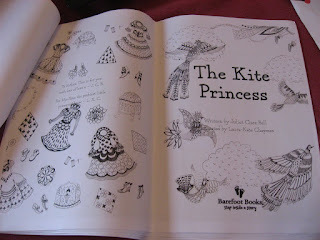
Juliet Clare Bell’s rhyming picture book, The Kite Princess (see title page roughs, above) is illustrated by Laura-Kate Chapman and published by Barefoot Books and is out in autumn, 2012, in the UK and the US (with an accompanying CD of the story read by Imelda Staunton). www.julietclarebell.com
January 1, 2023
An acrostic of patience by Chitra Soundar

Welcome to 2023 at Picture Book Den.
Our Den is cosy and warm and no gas and electricity bills to pay. We have stacks of picture books, wise authors and illustrators who absolutely love the medium of picture books.
For the last few years, I’ve been the posting the first blog post of each year. That’s like coming out of hibernation after we posted our final post of 2022 and prepare for it, in the lazy stupor between Christmas and New Year.
In 2020, I talked about new year resolutions and picture books that teach good and bad habits. In 2021, I encouraged picture book writers to make the resolution of letting go.In 2022, I talked about tears and laughter during rituals and celebrations.
Over these years, I’ve grown as a writer (I really hope so). And I have gotten used to being patient. Patience as you know is the key to being a writer. More so, as a picture book writer. While chapter books and novels can be published in a year from signing a contract, picture books take longer.
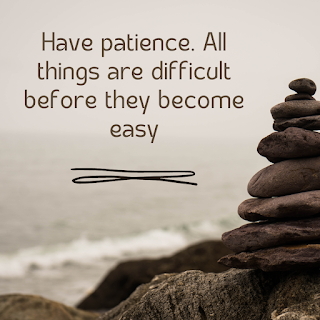
I’m someone who loves instant gratification simply because I had to wait for everything as a child. A trip to the movies had to be budgeted weeks away, an ice-cream treat had to be saved up for. So as an adult, when I became financially independent, I gave myself the luxury of instant gratification.
And then I became a writer! As a writer, as much as you want to see your words in print, in book form in a child’s hand, the manuscript goes through a long journey. Sometimes it ends up as envisaged. Sometimes it gets stuck in the dark corner of my hard-disk called ARCHIVE.
Some of my stories took years in the making. Here is an example of I patiently wrote and rewrote one story and willed it into publication.
Another example of a story I edited over many years, and never gave up is this one! I wrote it as a picture book but when the opportunity arose, I submitted it as an early reader and it worked.
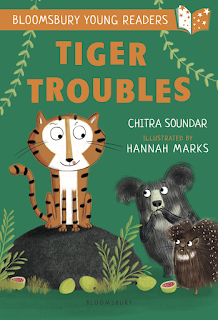 Illustrated by Hannah Marks and Published by Bloomsbury Education
Illustrated by Hannah Marks and Published by Bloomsbury EducationFor someone who is impatient in life – if I think of something I have to do it, I’ve also learnt the art of being patient. So I thought I'd share some of my hard-learned wisdom on patience with you through an ACROSTIC.
P – put it away . After you write your text, don’t send it to anyone. Put it away and re-read it after a few weeks. Edit and put it away for a few days. The more you let it stew, better your perspective.
A – Avoid submitting it too early . Make sure you’ve got a peer to read it – someone who is also writing picture books, someone you trust who will give you good feedback. Read this post by Michelle Robinson on the balloon analogy.
T – Take the story out for a walk . Read it aloud. Read it to a group of children, not all your own. See if you can find a local nursery or Reception class in your local school who might let you read it to their class. Read the story with voices. Act out the characters. As an oral storyteller, I’ve found that telling the story aloud, reading it aloud many times and making someone else read your story aloud helps. It helps to see what’s wrong with it and what works.
I – Identify what’s wrong with the text . This is a craft thing – learn your own flaws. Do you use too many “was”? Do you tell more than show? Are you over-writing? Make a list of things to look out for and identify them in every rewrite.
E – elevate your text . Always aim to write at the level of the best picture books written for children. Don’t pick one that’s so-so and think you can write as good as that. Aim high! A common example in manuscripts I review is the word count. Most UK published picture books are around 300 words. Challenge yourself to tell the story in 300 words, instead of pointing at decade-old examples of picture books with 1000 words in them.
N – Find that niggle . When you’re reading that text, you know a word or a line or even the plot is not working for some reason. But you think no one will notice. The whole text might fall apart if you pick at it. But believe me, someone will notice it. A trained eye of the editor will definitely pull that one piece bringing the structure down. So, it’s better you fix it before you show an agent or an editor.
C – Find a critique group or a critique partner . If you already have one, listen to their critiques, notes and feedback. You don’t have to change your text to satisfy every critique. But you must listen to the note under the note. You don’t even have to use the ideas of your critique group to fix the problems in your text (my critique group is awesome and they help with a lot of ideas). It’s ultimately the call of the writer. But if everyone’s saying spread 5 has a problem – then spread 5 perhaps has a problem. Ignoring it will not make it go away. Defending it will not help because when you submit to an agent or an editor, you won’t be there in person to defend it.
E – Know when to end . Both the story and the process. Knowing when to end a picture book is as important as when to start it. Younger picture books, especially fun ones, end with a twist, a joke or a surprise after the last page. Find out if your text lends itself to a quirky ending – satisfying and leaving the reader with a chuckle.
However, knowing when to end the writing process is a trickier. Sometimes we pick at it so much for months together that the life in the story gets killed. Sometimes a story isn’t going to work. It wasn’t an idea for kids or it wasn’t idea that you can make it work as a picture book. Let it go.
But you know what will work? Putting it away… So back to the first step of PATIENCE.
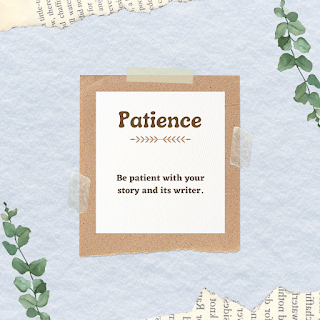
 Now that you’ve heard me rant about patience, here is a story tip!
Now that you’ve heard me rant about patience, here is a story tip! There are not that many books about “being patient” for young picture book readers. Perhaps you can learn the art of patience by writing a story about it? That’s your new year’s challenge from Picture Book Den!

Chitra Soundar is an internationally published, award-winning author of children’s books and an oral storyteller. Chitra regularly visits schools, libraries and presents at national and international literary festivals. She is also the creator of The Colourful Bookshelf, a curated place for books for children by British authors and illustrators.
Find out more at http://www.chitrasoundar.com/ and follow her on twitter here and Instagram here.
December 18, 2022
Picture Book Den Celebrates - Christmas Trees!
'Tis the season to be merry and we would like to say a big thank you to all our readers and supporters this year.
To celebrate, we have each chosen a picture book that features a TREE!
Natascha Biebow
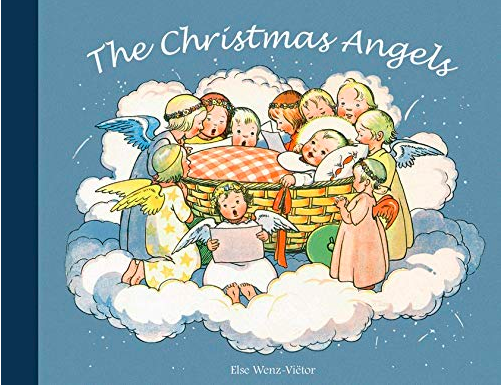
This beautiful cloth-bound Christmas story is magical! It's Christmas Eve and ten little angels are busy helping people on Earth. With each kind, thoughtful, compassionate act, the Angels turn around and join the choir (the angel heads are cut-outs along the top of the book). Until . . .
 From The Christmas Angels by Else Wenz-Vietor
From The Christmas Angels by Else Wenz-Vietor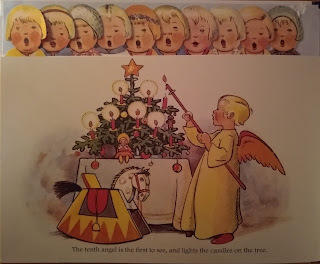 "The tenth angles is the first to see (the tree for all the angels who do good things),
"The tenth angles is the first to see (the tree for all the angels who do good things),and lights the candles on the tree."
(From The Christmas Angels by Else Wenz-Vietor)
In my family, which is originally from Northern Europe, we always had real candles like these on our tree. Even in Brazil where I grew up, where it's baking hot at Christmas time! The family tradition has kept on going. The warm candle-lit glow is a reminder of the spirit of Christmas family time and gratitude for small acts of kindness. Wishing you a happy festive season wherever you are!
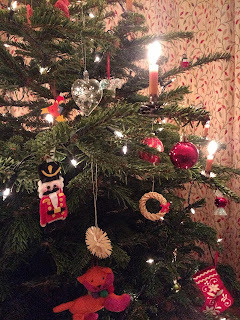
Mini Grey
I'm choosing Adoette by Lydia Monks. It's not a Christmas tree, but a street tree who is celebrated in this book.
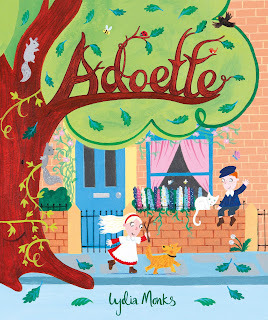
Lydia Monks was inspired to write the story of Adoette (whose name means 'large tree' in Native American) by the rampant tree-felling that went on in her home city of Sheffield from 2014. Adoette is a 100 year old tree.

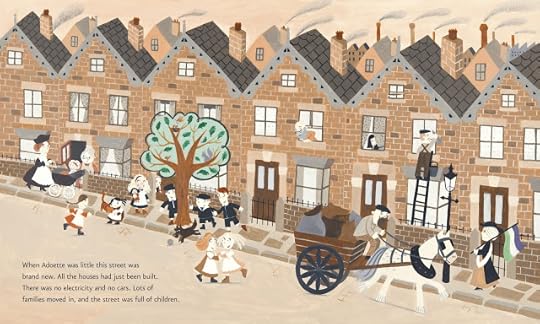
When she was a sapling, she stood in a field, but then a city grew around her and she became a street tree. (How excellent that the Victorians retained existing trees when they built cities; there's a tree in Sheffield who was also originally in a field called Vernon Oak - you can follow this tree on twitter at @SAVEDORETREES) Adoette becomes a large mature street tree...but then people start to wonder if she's getting in their way....


I love street trees - they're our city forests. One big old tree can be a home to a vast number of organisms. Where people and nature come together, nature often seems to be considered inconvenient. Adoette is a plea to cherish our street trees. Let's give midwinter thanks for them!
Pippa Goodhart
What more important tree could there be at Christmas than The Family Tree, whether that family is created by blood or friendship, people or creatures or ... sticks?
Julia Donaldson's Stick Man story is (and I don't say this lightly) perfect; funny, exciting, heart-rending, heart-mending, with a glow of Christmas at the end. Axel Sheffler's pictures bring the story to visual life, endowing sticks with such character we are them as we read words and pictures.
'Stick Man lives in the family treeWith his Stick Lady Love and their stick children three.

But disaster befalls poor Stick Man, and he is taken further from home and more into danger to a point where it seems all is lost ... until he and Father Christmas save each other, and ...

Lynne Garner
I've chosen Be A Tree written by Maria Gianferrari and illustrated by Felicita Sala.
Before I started writing picture books I was, am still am a non-fiction writer. So, I love a good non-fiction picture book. Especially one that has such an important message. The book starts with the lines "Be a tree! Stand tall. Stretch your branches to the sun." In my minds eye I can see a room of kids taking part in the story. Stretching their arms out and being a tree.
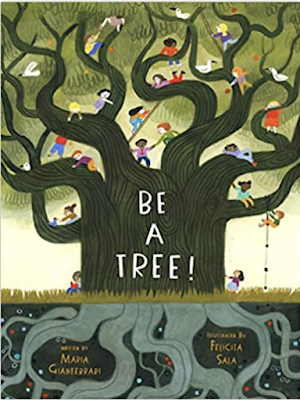
The book continues in this vein linking our bodies to the parts of a tree. It also touches on the wonder of nature and that fungi and trees live successfully together, supporting one another and allowing trees to communicate.
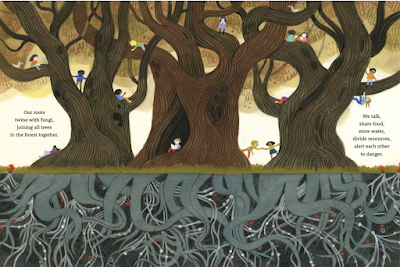
It explores how important trees are and that they, like us are stronger together than alone. Perhaps my favourite lines in the entire book is "a family, a community, a country, a cosmos. There is enough for all."
So, if you're looking for something to educate and entertain a child in your family do add this book to your list.
Clare Helen Welsh
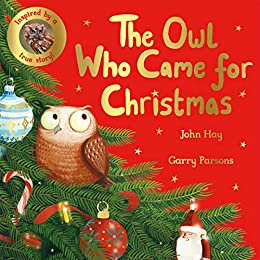
Those who know me and my picture book tastes, know I have a fondness (ok, let's call it an obsession!) for books that merge the line between fact and fiction. Whether you refer to them as narrative non-fiction, faction or something else, there's so much inspiration in the real world.
The Owl Who Came For Christmas, written by John Hay and illustrated by our very own Picture Book Denner - Garry Parsons - is a great example of a picture book whose roots began in an incredible true life event.
Christmas is coming, and the decorations are going up…
But one family is about to discover an unexpected visitor snuggled up in their Christmas tree…
A little owl called Rosie!
This picture book is a sweet and heart-warming tale about a family who find a little owl nestled in their Christmas tree! It is based on the true story of an owl who was sleeping in a tree when it was cut down and taken to the city! Children will love the inclusion of 'The story of the real Rosie the Owl' at the back of the book. I personally love to hear what inspires creatives in their works of fiction.
I fell in love with this little owl from the cover alone! But inside, the charming characters and a wonderful story continue - an excellent picture book for young families, especially at Christmas time, that may also spark a conversation about conservation with a gentle reminder that our trees were once living in the wild.
Chitra Soundar
Trees are magical beings in many cultures including my own. But when I heard about this tree that brought hope to many in Puerto Rico, I wanted to include it here. In today's world of seeing differences, Anna Orenstein-Cordon's The Tree of Hope, illustrated by Juan Manuel Moreno is a story of hope in a world battered by climate change and inaction.
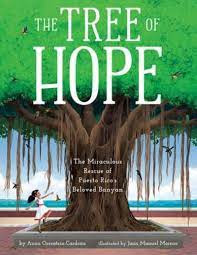
I first read this story as a manuscript and it touched my heart. Banyan trees are divine beings in my own culture and in this town in Puerto Rico, the banyan tree had stood for over a hundred years until the hurricane. Anna's lyrical text and Juan's beautiful art brings alive the town before and after the hurricane and how the whole town was inspired to bring the tree back to life.
This story is a true Christmas story in spirit, of coming together and loving nature as much as it loves us.
Happy Christmas!
December 11, 2022
The Picture Book Den team Celebrate the Career of Author Jane Clarke
Jane Clarke has written over 100 books for children and has been a valued member of the Picture Book Den since it started.
Jane's picture books include Gilbert the Great, illustrated by Charles Fuge, the popular Neon Leon series with Britta Teckentrup, and her latest title for Walker Books, A Small Persons Guide to Grandmas, illustrated by Lucy Fleming.
In October Jane announced her retirement from writing, so with that in mind, the remaining members of The Picture Book Den have dedicated this week's blog post to celebrate Jane's wonderful career in children's publishing.

Natascha Biebow
I was fortunate enough to edit and publish Jane's first book (Sherman Swaps Shells, illustrated by Ant Parker, in the Flying Foxes young fiction series) and collaborate on many others over the years, including G.E.M. illustrated by Garry Parsons, and Dippy's Sleepover, illustrated by Mary McQuillan. Right from the start, Jane's stories struck me for their VOICE. She created such vivid, fun, child-centred worlds on the page! I would love to pay tribute to a particularly fun collaboration to create what became a bestselling and award-winning book.
Knight Time started out as a wordless book. But Sales didn't think they could sell a wordless book - parents would have to figure out the story . . . Also, the story required two points of view as a central theme. How could we do this for very young children without it being confusing? There was something intriguing here, a nugget of a great picture book idea, but we were stuck.
I took the train to see Jane and we spent the afternoon at her kitchen table with sellotape and scissors. We cut up the book and put it back together again. We made a dummy!
Now, readers could see both the Little Knight and Little Dragon's stories building side-by-side until the climactic turning point where their worlds collide - and the age-old expectations are challenged. The reveal? Despite what they've been told about each other, Little Knight and Little Dragon both have teddies and blankies!
I pitched the book to Sales as 'Theatre in a Book', and matched it up with Jane Massey to create the adorable characters and gorgeous world. We managed to get it to cost out with foil on the cover and the die-cut shapes and flaps.
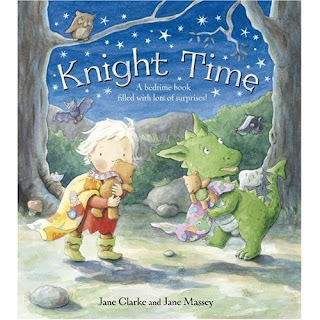

 Since then, I've had so much fun collaborating with Jane fairy tale detective picture books (Sky Private Eye series, illustrated by Loretta Schauer) and inventive young fiction books with factual graphic novel elements (Al's Awesome Science and Lottie Loves Nature series, illustrated by James Brown) on the Five Quills list. Best of all, we've become friends and it was Jane who first invited me to be part of the Den, for which I'm so grateful! Working with Jane is an editor's joy - such a talented lady! I hope she really does keep writing, even if it's an archeological adventure for grown-ups. She is far too young to retire!
Since then, I've had so much fun collaborating with Jane fairy tale detective picture books (Sky Private Eye series, illustrated by Loretta Schauer) and inventive young fiction books with factual graphic novel elements (Al's Awesome Science and Lottie Loves Nature series, illustrated by James Brown) on the Five Quills list. Best of all, we've become friends and it was Jane who first invited me to be part of the Den, for which I'm so grateful! Working with Jane is an editor's joy - such a talented lady! I hope she really does keep writing, even if it's an archeological adventure for grown-ups. She is far too young to retire! Pippa Goodhart
Jane's books speak straight to young children's real lives, revelling in exactly what young children enjoy. I'm going to keep this thank you from the Picture Book Den simple by showing a spread from Jane's How To Tuck in Your Sleepy Lion board book, illustrated by Georgie Birkett, which just seems to sum-up that kind of book that gets requested again and again and again, and even appropriately references a den!

Clare Helen Welsh
Jane has such a talent for combining engaging stories with awe and wonder of the world around us. This is evident in her Neon Leon series, illustrated by Britta Teckentrup and published by Nosy Crow. In Firefly Home for example, children learn about fireflies and different kinds of light sources. The story is gently interactive, inviting children to help Florence on her journey home. As well as being enjoyable and educational, Firefly Home ends with a suitably snuggly ending making it the perfect bedtime read.
Thank you for sharing your books and picture book insights with us, Jane, and for being a beacon of light in Picture Book Den.
Garry Parsons
I have been lucky enough to illustrate three books Jane has written but what an unbelievable thrill it was to watch Dolly Parton read 'Stuck in the Mud' on CBeebies Bedtime Stories on New Years eve 2017.

Thank you Jane for making a wild dream come true. Yeehaw!
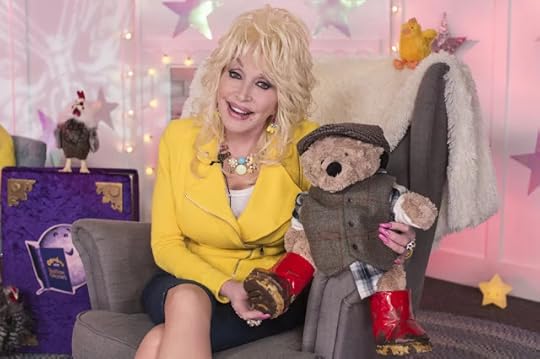 Watch Dolly Parton reading Stuck in the Mud by Jane Clarke here https://www.bbc.co.uk/cbeebies/watch/cbeebies-bedtime-stories-dolly-parton-stuck-in-the-mud
Watch Dolly Parton reading Stuck in the Mud by Jane Clarke here https://www.bbc.co.uk/cbeebies/watch/cbeebies-bedtime-stories-dolly-parton-stuck-in-the-mudLynne Garner
Sometime in 2011 (where have the years gone?) I had this daft idea that I wanted to blog about picture books, and it would be nice to be part of a team. So, I put the word out and to my amazement others felt this was a good idea. Jane became part of that first team and her first post appeared on the 15th of March 2012 (click here to read).
So it’s hard to say goodbye to Jane but at least this post gives me the chance to explain why Jane is such a gifted writer.
My choice is Creaky Castle – to see Jane reading this book click here.
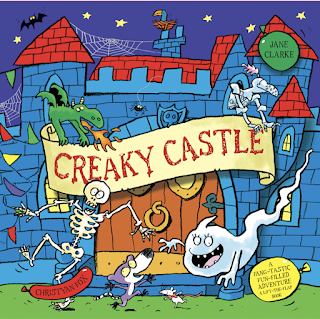
Now, one of the first lessons I learnt when I started writing picture books only write in rhyme if you are good at it. The reasons being that writing in rhyme for an entire story is hard work. Also, your story must be strong. This is because many picture books are translated and if the story isn’t strong enough this can’t happen. So basically, you must be a great picture book writer to get a rhyming picture book published, especially one that on Amazon has 4.9 stars out of five. So if proof is needed to show Jane's skills as a writer then this is at the top of my list.
Jane – thanks for being a valued member of the team for the last ten and bit years. We all wish you well and should you get the urge please pop back and write a guest post. We’d love to have you back even if for just a post.
December 4, 2022
Cumulative Christmas picture books, by Pippa Goodhart
On the first day of Christmas my true love sent to me
A partridge in a pear tree.
…
On the twelfth day of Christmas my true love sent to me
Twelve drummers drumming
Eleven pipers piping
Ten lords a-leaping
Nine ladies dancing
Eight maids a-milking
Seven swans a-swimming
Six geese a-laying
Five gold rings
Four calling birds
Three French hens
Two turtle doves
And a partridge in a pear tree!
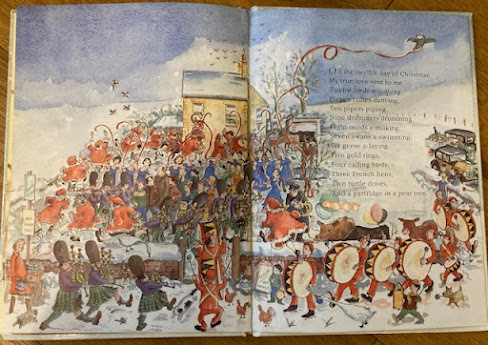
This image by George Buchanan
That English Christmas folk carol dating from at least the C18th is a fun game of a rhyme, testing our memories as we go through the ever-lengthening list of ever-dafter items. It’s been made into numerous picture book versions over the years, nicely fitting the standard twelve spreads. There’s a lovely Alex T Smith version in which Grandma has got carried away giving her granddaughter almost, but not quite, the traditional list of presents. ‘Seven snorkling squirrels’, or ten rhinos racing, for example, fit the bonkers nature of the original, and makes for a glorious images!

I also love this Britta Teckentrup version with cut away windows in the pages that reveal more and more.

But there was (its sadly now out of print) a cumulative Christmas picture book story that played brilliantly with the verbal and illustrative rhythm and build-up to play the Nativity story to best story effect.
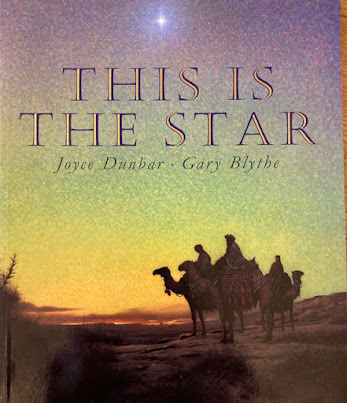
Joyce Dunbar’s This is the Star has a text based on the format of traditional rhyme story, This is the House that Jack Built.
This is the star in the sky.
…
These are the wise men come from afar
Who also saw and followed the star,
Bearing the gold, and fragrant myrrh
And frankincense, the gifts that were
Placed by the manger warm with hay
Wherein a new-born baby lay.
This is the ox and this the ass
Who saw these wonders come to pass
At the darkened inn where the only room
Was a stable out in the lamplit gloom
For the donkey and his precious load
Who trudged the long and weary road,
Looked on by the angel shining bright,
Who came to the shepherds watching by night
That saw the star in the sky.
But then, with shock and focus and clarity, the next spread gives us starkly and clearly …
This is the child that was born.
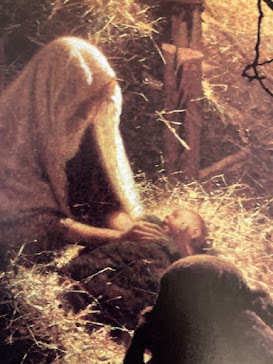 … before the book gives us another spread even more full of text, and then, again, going for the minimal …
… before the book gives us another spread even more full of text, and then, again, going for the minimal …
Still shines the star in the sky.
That’s such a thought-provoking truth! Gary Blythe’s stunningly realistic illustrations, giving us a newborn baby who actually looks newborn, and wise men properly pondering the sight of this child, are as powerful and moving as the text.
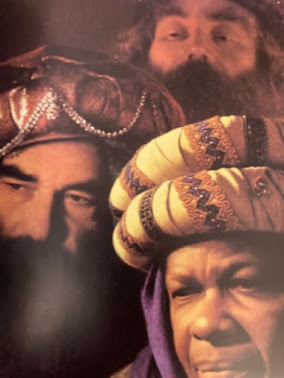
I hope that your Christmas cumulates loveliness of all sorts around you. Would your own twelve days of Christmas make a picture book?! Happy Christmas!
November 27, 2022
Sometimes You Have To Try On Different Trousers: How to Revamp Nonfiction Picture Book Ideas
 I’ve Been Trying on Different Trousers . . .
I’ve Been Trying on Different Trousers . . .
In the past few years, I’ve written four new nonfiction books.
I began them with gusto. I love true stories. Those nuggets of facts that make you go ‘wow, really?!’ have me dancing round the house to find someone who will listen to my latest discovery. I also love detective work, even if it means going to great lengths to fact-check and dig for missing links or get in touch with an expert.
But then those manuscripts didn’t sell. So I went back to the drawing board.
I read. I did more research.
I was searching for a new way to grip the reader (and editor). One that would ‘fit’ the story in a different way.
I asked myself:
Was there another way in to tell this story? Could I change the point of view? Could I include different facts? Could I change the style of nonfiction or the target age group? Could I make it longer, shorter, with sidebars, more back matter or . . .?
According to bestselling nonfiction author, Melissa Stewart, I was shopping for a new text structure. It’s like shopping for a pair of trousers (pants, if you’re American), she says.
“When we shop for pants, we usually know what purpose we want them to serve. Are they for playing sports? Relaxing around the house? Going to a fancy party?”
Authors have to figure out what they’re most excited to share with readers. They have to rule out pants that are the wrong colour, size or fit. Pants they don’t like. Pants that are not fit for purpose.

Text structures are patterns that help us to arrange and connect ideas so young readers can “access, understand and remember information more easily.”
In the case of narrative nonfiction, they are an important part of the voice and way IN to the story.
Melissa Stewart has identified seven structures:
Description:
Sequence /Chronological Sequence
List
Compare & Contrast
Cause & Effect
Problem- Solution
Question & Answer
 Finding the right text structure is like building
Finding the right text structure is like building
the right frame for a house - it can really make a book!
Once you rule out some structure types that instantly don’t seem like a good fit, you eventually get to the point where you have to try them on to see which fits best. That’s where mentor texts can really help. Looking at other picture books with a critical eye and acting like a detective can be useful to reassess what kind of structure would work best on your book. In their book, 5 Kinds of Nonfiction: Enriching Reading and Writing Instruction with Children’s Books by Melissa Stewart and Marlene Correia, the authors suggest looking at the same topic with different text structures. For instance FROGS. When you do this, it's amazing how many different approaches you can find for exploring just one topic in a children's nonfiction book! Lots of different structures, lots of different lenses.
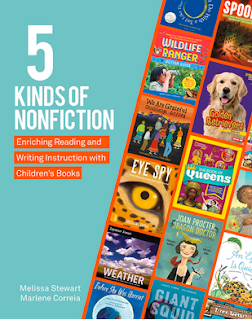 Kinds of Nonfiction: Enriching Reading and Writing Instruction with Children’s Books
Kinds of Nonfiction: Enriching Reading and Writing Instruction with Children’s Books by Melissa Stewart and Marlene Correia
Sometimes, you need another element as well – a personal connection to the story, an a-ha! nugget that will really hook young readers and make them take notice. You have to write and rewrite to figure out and understand what your book is really about and why it matters. Is it surprising to you? Does it make you think in a new way?
When even when I finally find the right fit, the right pants, I also need to personalize them – I need to check: why am I writing this story?
Melissa points out that there are other structures that imaginative authors have invented to fit the topic. For example, in SWIRL BY SWIRL: SPIRALS IN NATURE by Joyce Sidman and Beth Krommes, the text starts with examples that are small and snug; these get bigger and spiral outward and finally curl up again for the ending – just like a spiral.

In one of my favourite recent nonfiction picture books, WHAT’S IN YOUR POCKET? COLLECTING NATURE’S TREASURES by Heather Montgomery and Maribel Lechuga, Heather tells stories of what famous scientists’ collected and kept in their pockets as children – and links how these later led them to make important discoveries as grown-ups.
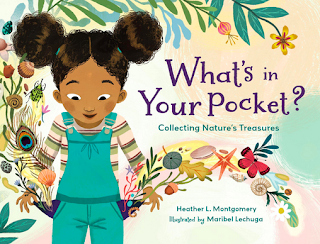
For instance, Diego Cisneros-Heredia, kept snails, slugs, scorpions and lizards in his pockets – and later discovered more than thirty new species of frogs. And Bonnie Lei collected tide pool creatures and later studied sea slugs and even found a new kind!
 From What's In My Pocket? by Heather Montgomery and Maribel Lechuga
From What's In My Pocket? by Heather Montgomery and Maribel Lechuga From What's In My Pocket? by Heather Montgomery and Maribel Lechuga
From What's In My Pocket? by Heather Montgomery and Maribel LechugaHeather Montgomery cleverly makes each figure relevant to young readers by tapping into a universal childhood love for collecting and outdoor play – and cleverly links this to how they were growing science skills that would lead to a lifelong passion working in the field.
This is what I am hoping to somehow create for each of my nonfiction book ideas. But how?
LOOK really closely at your topic. Look for:
• patterns
• key vocabulary words
• how do you want to make the reader FEEL?
• links to children’s lives and interests!
The hardest part? Keeping it SIMPLE and not being tempted to jam in everything!
I am inspired by Melissa Stewart’s tales of how it can take a long time to find the right structure and sell a book to an editor. For instance, it took her from December 2010 to December 2014 to get the manuscript for Can an aardvark BARK? accepted. In this time, she experimented with four different structures!
 https://www.melissa-stewart.com/timelines/timeline_aardvark/timeline_aardvark.html
https://www.melissa-stewart.com/timelines/timeline_aardvark/timeline_aardvark.htmlPerhaps there is hope for my ideas and revised stories yet. I’m not giving up!
@font-face {font-family:"MS 明朝"; mso-font-charset:78; mso-generic-font-family:auto; mso-font-pitch:variable; mso-font-signature:-536870145 1791491579 18 0 131231 0;}@font-face {font-family:"Cambria Math"; panose-1:2 4 5 3 5 4 6 3 2 4; mso-font-charset:0; mso-generic-font-family:auto; mso-font-pitch:variable; mso-font-signature:-536870145 1107305727 0 0 415 0;}@font-face {font-family:Calibri; panose-1:2 15 5 2 2 2 4 3 2 4; mso-font-charset:0; mso-generic-font-family:auto; mso-font-pitch:variable; mso-font-signature:-520092929 1073786111 9 0 415 0;}p.MsoNormal, li.MsoNormal, div.MsoNormal {mso-style-unhide:no; mso-style-qformat:yes; mso-style-parent:""; margin:0cm; margin-bottom:.0001pt; mso-pagination:widow-orphan; font-size:12.0pt; font-family:"Times New Roman"; mso-fareast-font-family:"MS 明朝"; mso-fareast-theme-font:minor-fareast; mso-ansi-language:EN-US;}.MsoChpDefault {mso-style-type:export-only; mso-default-props:yes; font-size:10.0pt; mso-ansi-font-size:10.0pt; mso-bidi-font-size:10.0pt; mso-fareast-font-family:"MS 明朝"; mso-fareast-theme-font:minor-fareast; mso-fareast-language:JA;}div.WordSection1 {page:WordSection
_________________________________________________________________
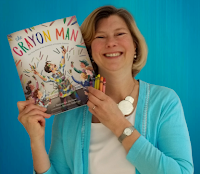 Natascha Biebow, MBE, Author, Editor and Mentor
Natascha Biebow, MBE, Author, Editor and Mentor Natascha is the author of the award-winning The Crayon Man: The True Story of the Invention of Crayola Crayons, illustrated by Steven Salerno, winner of the Irma Black Award for Excellence in Children's Books, and selected as a best STEM Book 2020. Editor of numerous prize-winning books, she runs Blue Elephant Storyshaping, an editing, coaching and mentoring service aimed at empowering writers and illustrators to fine-tune their work pre-submission, and is the Editorial Director for Five Quills. Find out about her new picture book webinar courses! She is Co-Regional Advisor (Co-Chair) of SCBWI British Isles. Find her at www.nataschabiebow.com
November 20, 2022
Taking part in the Inktober challenge - with Mini Grey
So this week I wanted to tell you what I’ve learned from doing the odd Inktober challenge and similar things, and how discoveries from Inktober-type activites can come in useful to a terrified illustrator.
So what’s Inktober?
It’s a challenge to make a picture for every day of October, possibly in ink. There’s a set of prompt words you can use if you want. Here are the prompt words for 2022:
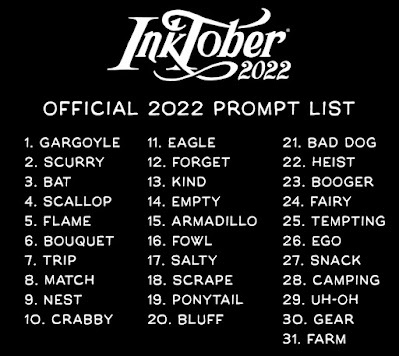
There are other daily drawing challenges. In 2018 John Vernon Lord inspired a One Inch Drawing a Day challenge for September with Quentin Blake’s House of Illustration (now the Quentin Blake Centre for Illustration).
John Vernon Lord’s drawings were about 3cm square, and he kept up his Drawing-a-Day challenge for an entire year. He didn’t have any themes or prompts, saying “I would just plunge into something that occurred to me on the spur of the moment.”
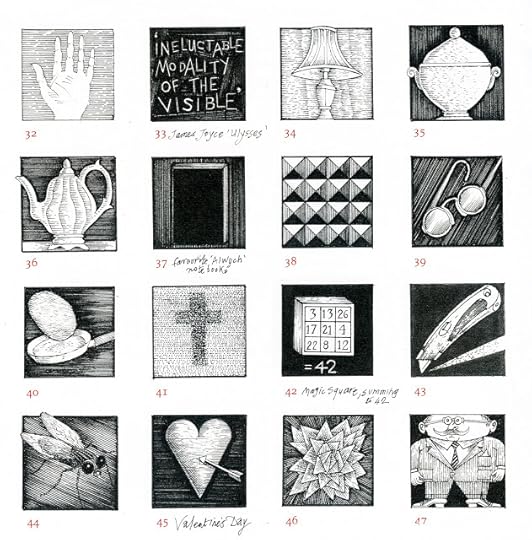 Some of John Lord's Drawing-a-Days: can you guess the month?
Some of John Lord's Drawing-a-Days: can you guess the month?I particularly liked JVL’s life-size objects and creatures, like this fly, woodlouse, and beetle.

It felt like you could pick them out of the picture. I decided to do an insect every day for the September 2018 one-inch challenge. I ended up calling them Meet the Relatives. Each one had a name label a bit like those cases of pinned insects you get in Natural History Museums.
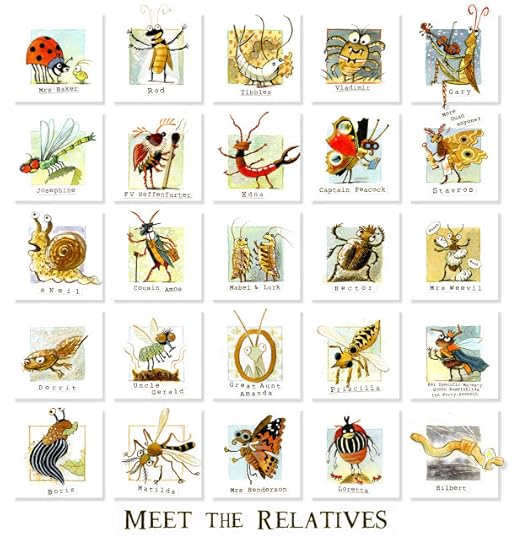 The Drawing a Day challenge with the House of Illustration inspired lots of joining in. Here are just a few of the collections at the end of September 2018.
The Drawing a Day challenge with the House of Illustration inspired lots of joining in. Here are just a few of the collections at the end of September 2018.
 By Sojung Kim-McCarthy: litter found on the beach transformed into tiny beauties
By Sojung Kim-McCarthy: litter found on the beach transformed into tiny beauties One inch miniatures by John Shelley
One inch miniatures by John Shelley A Drawing a Day from Freya Hartas (John Vernon Lord's granddaughter)
A Drawing a Day from Freya Hartas (John Vernon Lord's granddaughter)But back to this year’s Quinktober.
This year I set myself some rules. This October, for my Quinktober2022, my rules were:
A size rule: the picture had to be 10cm square.
µA materials rule: had to use Quink ink somewhere.
µ A theme rule: the theme was ‘animals’.
And what did I find out making Quinktobers this October?
That scribbly response doodle you did first: that’s your friend.
I discovered that I love the surprise of responding to a word, it’s like going fishing in some magic lake where you never know what unexpected creature you might pull out.
I discovered the value of the quickest sketch ever – that first response scribble – as a crumb, a clue, a starting point to draw from. Leaving a breadcrumb trail of rough starter sketches for the days coming up make it easier for tomorrow’s you to get started.
 Sketches for Quinktober 2022
Sketches for Quinktober 2022Responding – to a prompt word – is a thrilling process. Your own response can be surprising and take you to new places. Sometimes you have to drag a response out kicking and screaming. Sometimes you have to worry away at the word to find something in it that you can use.
I think the act of responding…is at the heart of picture book making. Pictures respond to words, words respond to pictures, they dance together.
Once you’ve caught an idea you like, the rest is easy….It’s having that starting point that’s so valuable, you’ve got something to work with – rather than the endless possibilities of a blank page.
Tracing Paper is my friend...
...to experiment, to make copies, to cut up and move around on my 10cm grid for working my drawing out. I can’t just draw something right how I want it first time, so now I don’t expect to be able to.
 Working out day 25 TEMPTING
Working out day 25 TEMPTINGImpossible prompt words – can be good.
Some of the prompt words just didn’t fit in my animals theme, or didn’t appeal; for example, Day 23 BOOGER and day 29 UH-OH. But it’s good to be pushed away from your familiar territory and have to work at how to find an image.
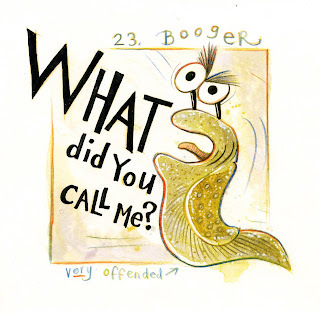 Day 23 BOOGER
Day 23 BOOGERI do love the square. I do love breaking the frame.
For me, the fun of having things escaping out of your border never gets old!
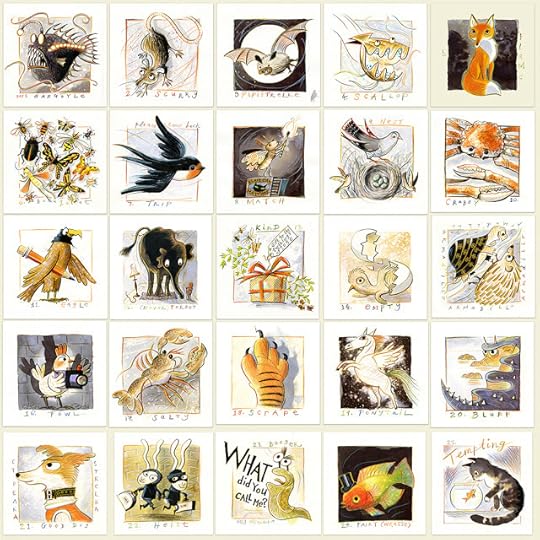
Making your daily drawing can become your happy place...
…and you can start to look forward to going there – especially when you know your rules/method.
There’s a relief to doing a small solvable thing: especially when it’s relief from smashing your head against the brick wall of a story idea that refuses to work. There’s also the relief of images not having to be consistent or related in any way.
Determination to complete the challenge creeps in, so it becomes important that it has to be done – which is motivating.
This activity can’t take too long – so there has to be a bit of acceptance when you’re unhappy with it. I never allowed myself to start till after 5.30 pm.
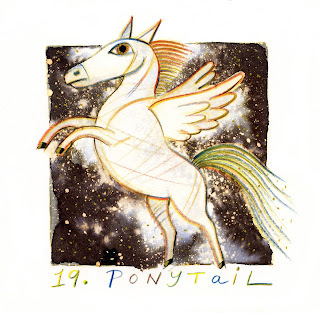 I was VERY unhappy with day 19 - PONYTAIL.
I was VERY unhappy with day 19 - PONYTAIL.Also your prompt words provide something to mull over when you’re driving up the M40 again (or whichever is your motorway of choice.)
And lastly:
Making a collection is nice.
It’s fun to see if the collection seems to belong together.
It always takes longer than you think. (Even when you take into account Hofstadter’s Law.)
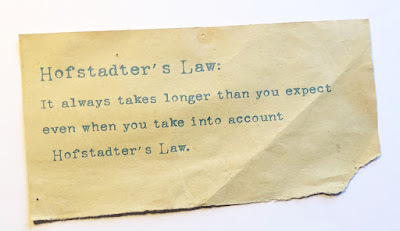
John Vernon Lord notes that his Drawing-a-Day average time was 36 mins per drawing. I think my pictures often took most of an hour.
Your pictures can sail out into the world.
It was fun to post up an image every day on Twitter and Instagram, and discover that nice people were following them. So at the end of October I sold them off at exceptionally reasonable prices. And now they’ve flown off in the post to their new homes.
 Day 29 UH-OH now in the collection of teacher and illustration fan Mr Ben Morgan.
Day 29 UH-OH now in the collection of teacher and illustration fan Mr Ben Morgan.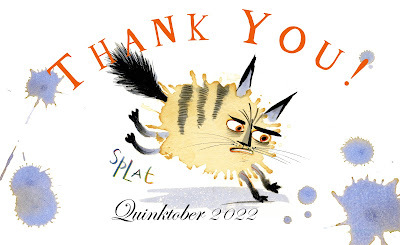
Mini’s latest book is The Greatest Show on Earth, published by Puffin.

November 8, 2022
The rise of the unicorn, from medieval tapestries and magical horns to frappuccinos and picture books - Garry Parsons
Unicorns are well established members of the picture book bestiary, but where did they come from and how long are they staying?

The unicorn, it seems, has origins in all sorts of places, from Chinese mythology to early Christian folklore, as well as sources being found in India and Persia.
The Hindu epic, Mahabharata tells of a human bodied unicorn called "Gazelle Horn" which has to be lured from the forest by the King's beautiful daughter in order to guarantee rainfall over the kingdom.
The Chinese unicorn, Ch'i-Lin, also lives alone in the forest. It's body gives off light and it has a voice like a monastery bell. Ch'i-Lin is the very meaning of benevolence and wisdom and is so allusive that it is only seen when the kingdom is ruled virtuously.
 Unicorn Cake!
Unicorn Cake!
Unicorns were a special fascination in the West during medieval Christian times. Still depicted with a fiery wild nature, they were also imbued with a loving spiritual benevolence. They were imagined in art as a metaphor for Christ.
This medieval unicorn, also aloof, rare and solitary, could only be coaxed from the forest by a virgin, where it willingly allowed itself to be captured. This 'capture' is interpreted as as the Spirit's willingness to be incarnated through the body of the Virgin Mary.
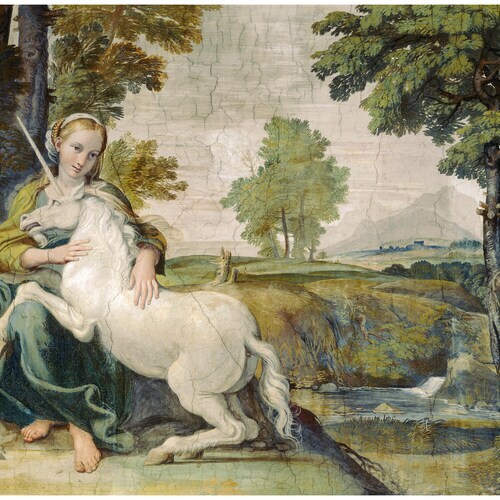 Virgin and Unicorn 1602 - Domenichino (1581 -1641)
Virgin and Unicorn 1602 - Domenichino (1581 -1641)So the general idea of the unicorn is that it of a wild, solitary creature, capable of great strength and speed and a creature that cannot be simply captured alive, unless by lure or trickery or it's own willing desire to be united as Spirit with matter. Most importantly, it has magical powers and is distinguished by a single horn in the centre of the forehead.
 The Unicorn in Captivity - Tapestry 1495 - 1505 Brussels
The Unicorn in Captivity - Tapestry 1495 - 1505 Brussels
Pulling our search for unicorns back from the mythological a little, is Elasmotherium sibiricum, otherwise known as the Siberian unicorn. Elasmotherium went extinct an estimated 39,000 years ago. Related to the five surviving species of rhino we know today, only twice as big (weighing 3.5 tonnes and standing 2.5 metres high) in Elasmotherium's day, there were as many as 250 different species of this ancient rhino.
 Elasmotherium sibiricum
Elasmotherium sibiricum
What's fascinating about this animal is that it went into extinction around the same time that Neanderthals went extinct, meaning that they would have been sharing Eurasia with both modern humans and Neanderthals. Clearly though, it wasn't all rainbows and sparkles for Elasmotherium, so where does our modern unicorn come from?
 danaisabellaa
danaisabellaa
Throughout the medieval period and long after, the unicorn and especially the horn, was thought to hold magical powers. In the 16th and 17th Century, trade in unicorn horn powder was thought to hold the ability to detect poison or purify contaminated water as well as healing wounds and illness. The horns were not unicorn horns of course but the tusks of narwhal or elephant. Nevertheless, this trade in 'magical' horn gave the unicorn a commercial value as well as mythical and perpetuated the unicorn's reputation for being rare and elusive - a creature you would know about but never saw and would certainly never capture.
Gradually however, the belief in the unicorn horns magical abilities to heal began to be met with scepticism, as did the belief in it's actual existence, and so the enthusiasm for the mythical creature waned and the golden age of the unicorn for this period came to an end.
 The Narwhal's tusk used as evidence for the existence of the unicorn
The Narwhal's tusk used as evidence for the existence of the unicorn
It wasn't until the rediscovery of the Lady and the Unicorn tapestries in the late 19th Century that a new spark of interest developed for the unicorn.
The Lady and the Unicorn tapestries were a series of six woven hangings, created in the style of mille-fleurs ("thousand flowers") made in Flanders from wool and silk. The tapestries are now considered one of the greatest works of the middle ages in Europe. Each of the six tapestries includes a noble lady depicted with a unicorn on her right and a lion to her left, and have been attributed as the inspiration for the French Symbolist painter, Gustave Moreau, in his canvas 'The Unicorns'.
Later still, during the 1950's, Jean Cocteau designed a ballet inspired by the tapestries, and so the unicorns presence came to the surface of popular consciousness once more.
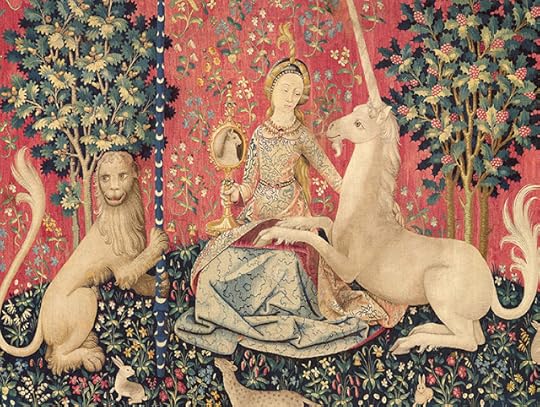 The Lady and the Unicorn Tapestries - Musee de Cluny - Paris
The Lady and the Unicorn Tapestries - Musee de Cluny - Paris The Unicorns - Gustave Moreau 1885
The Unicorns - Gustave Moreau 1885Racing forward to the modern era, the unicorn also made it's mark for the LGBTQ community with it's fusion of the rainbow flag (created by American artist Gilbert Baker) and becoming a joyous symbol of diversity and acceptance and appearing on T-shirts, flags and banners at pride events around the world.
 Starbucks Unicorn Frappuccino
Starbucks Unicorn FrappuccinoUnicorns get a real boost from the popularity of 'My Little Pony' in the 90's but it's not until later that the mythical beast begins to make a real significant cultural comeback.
Fuelled by social media and the arrival of the Unicorn Frappuccino from Starbucks in 2016, unicorn fever takes off exponentially a year later with My Little Pony; The Movie, voiced by Zoe Saldana, Emily Blunt and Kristin Chenoweth, becoming a huge hit at the cinema box office and propelling all sorts of unicorn merchandise into the mainstream market.
 My Little Pony - The Movie
My Little Pony - The Movie Instagram feeds become flooded with the new, vibrant, glitter effused, pastel coloured sparkling unicorn colours that we are familiar with today - a magical universe away from our worn out friend from the past, Elasmotherium.
 Vibrantandpure
Vibrantandpure
From unicorn toast and unicorn beauty products (complete with with make-up tutorials on youtube) to unicorn inflatables, unicorn cakes, unicorn eyelashes, unicorn nails, unicorn slippers, unicorn onesies and of course...unicorn picture books!
 A selection of unicorn picture books from Dad Suggests
A selection of unicorn picture books from Dad SuggestsSo regardless where the latest unicorn fever has come from, it is certainly alive in our minds and galloping wild through our imaginations. The latest golden age of the unicorn is well and truly underway and looks like it is here to stay... for a while at least.
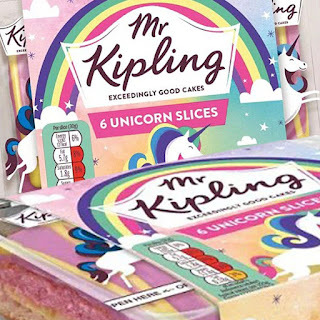
So celebrate National Unicorn Day on 9th April with a sprinkle of glitter and a slice of unicorn cake!
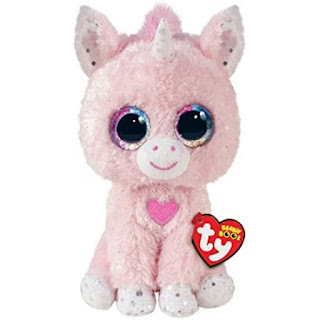
***
Garry Parsons is an illustrator of children's picture books including The Who's Whonicorn of Unicorns and Daisy and the Trouble with Unicorns, both written by Kes Gray and published by Puffin.
And to confirm that the trend for unicorns is here to stay (at least for a little while longer), The Who's Whonicorn of Unicorns 2nicorn is coming to a bookseller near you, soonicorn!
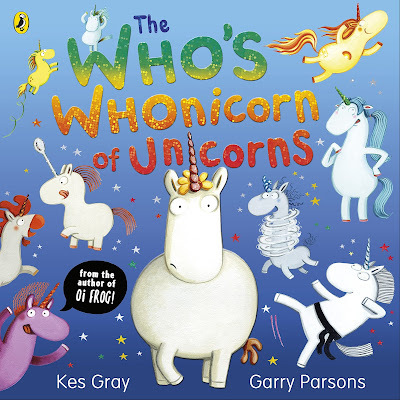
@icandrawdinos www.garryparsons.co.uk
***





